Sawyer Baker
sawyerkbaker@gmail.com
Sawyer Baker is the Program Officer for the Global Disaster Preparedness Center, which is a reference center co-hosted by the American Red Cross and International Federation of Red Cross and Red Crescent Societies (IFRC). Since joining the GDPC in November 2014, Sawyer has worked at the IFRC Secretariat in Geneva as staff-on-loan and has presented at various conferences on how the Center has been able to scale globally and localize disaster preparedness programming. She is currently supporting the Center’s newest flagship program, the Business Preparedness Initiative, which aims to save lives, protect livelihoods, and shorten recovery time by providing small businesses with an adaptable suite of preparedness tools and services.
Before coming to the American Red Cross, Sawyer interned at the DC Homeland Security and Emergency Management Agency, Pathways to Housing DC, and was a Red Cross volunteer. She received her bachelor’s degree in Sociology and Political Science from Iowa State University, where she also served as an ex-officio member of the Ames City Council. Sawyer holds a master’s degree in Public Administration from The George Washington University.
Assessment or evaluation, Research
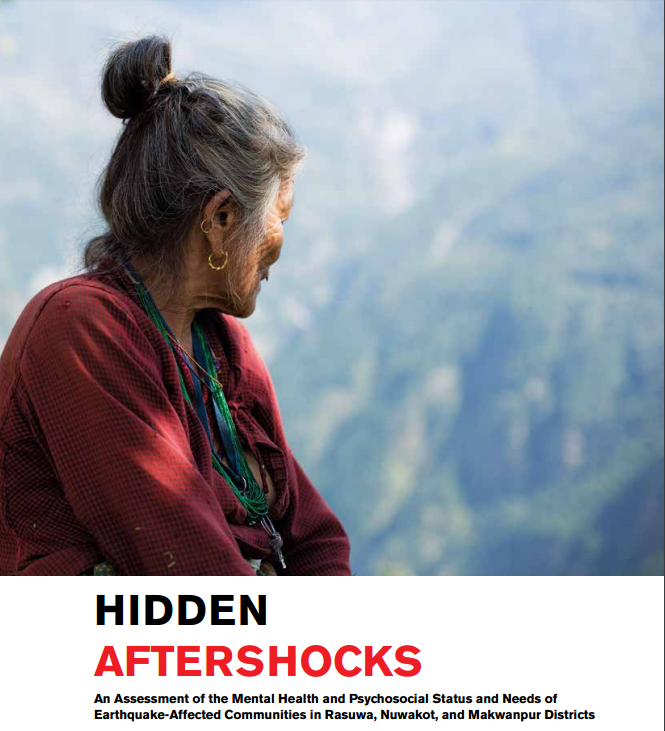
This report presents the results of an assessment of the psychosocial and mental health status and needs of communities in Rasuwa, Nuwakot, and Makwanpur districts of Nepal. The assessment took place between November 2016 and January 2017, approximat...
Report
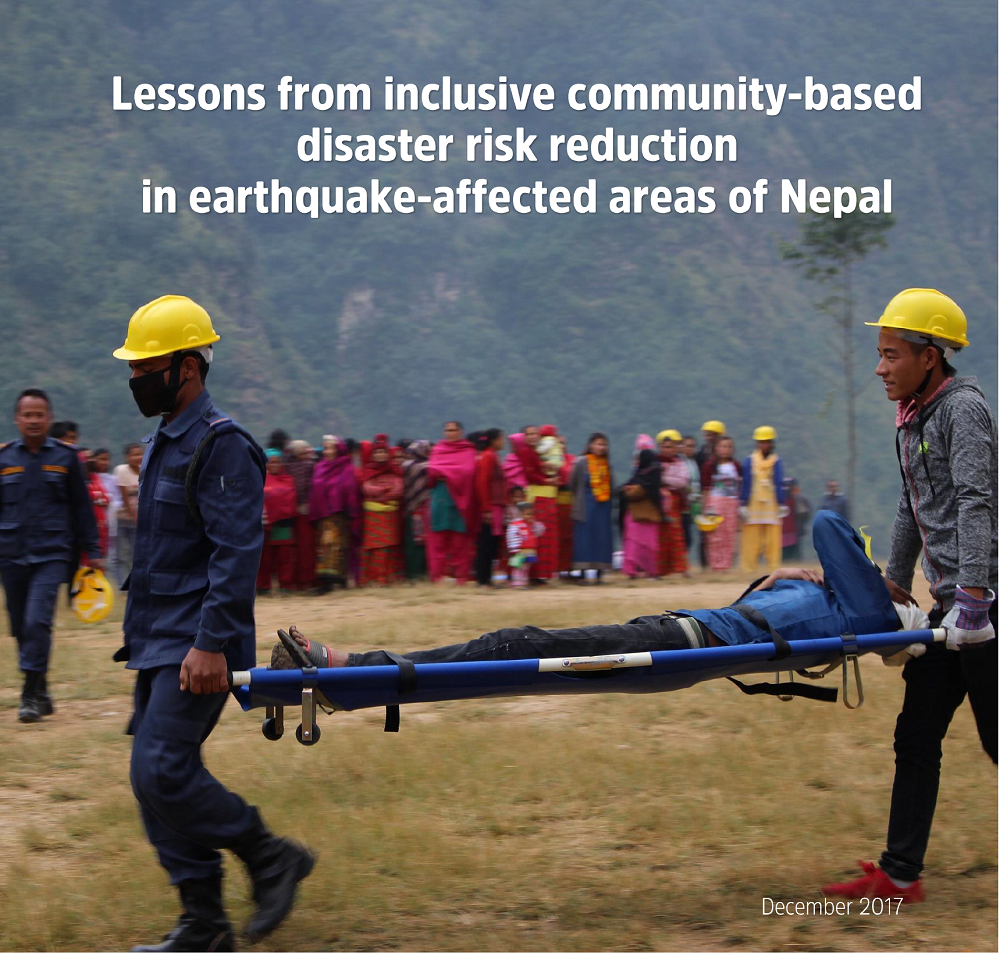
This summary report highlights lessons learned and recommendations for others implementing DRR and resilience programmes in Nepal, drawn from an inclusive community-based disaster risk management (CBDRM) project in four earthquake-affected districts....
Guidance material
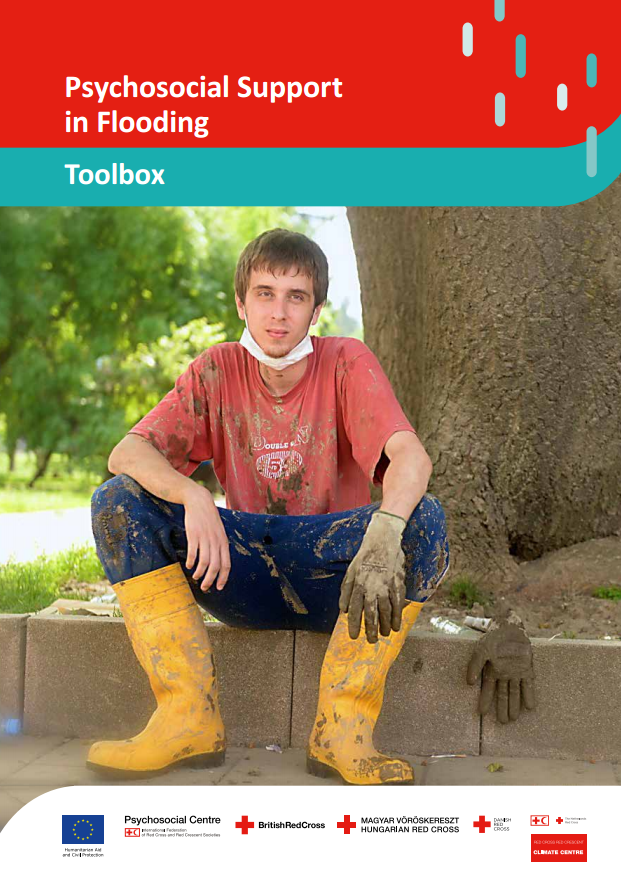
Psychosocial Support in Flooding: Toolbox accompanies Key Actions for Psychosocial Support in Flooding: Creating resilience in urban areas. The toolbox provides and overview of available tools that are relevant for psychosocial support in flooding s...
Awareness material

Using wetlands to minimize the damage from disasters Defined as land areas that are flooded with water, either seasonally or permanently, wetlands are a natural buffer against disasters. Along the coastline, wetlands act as a natural protective ...
Case Study
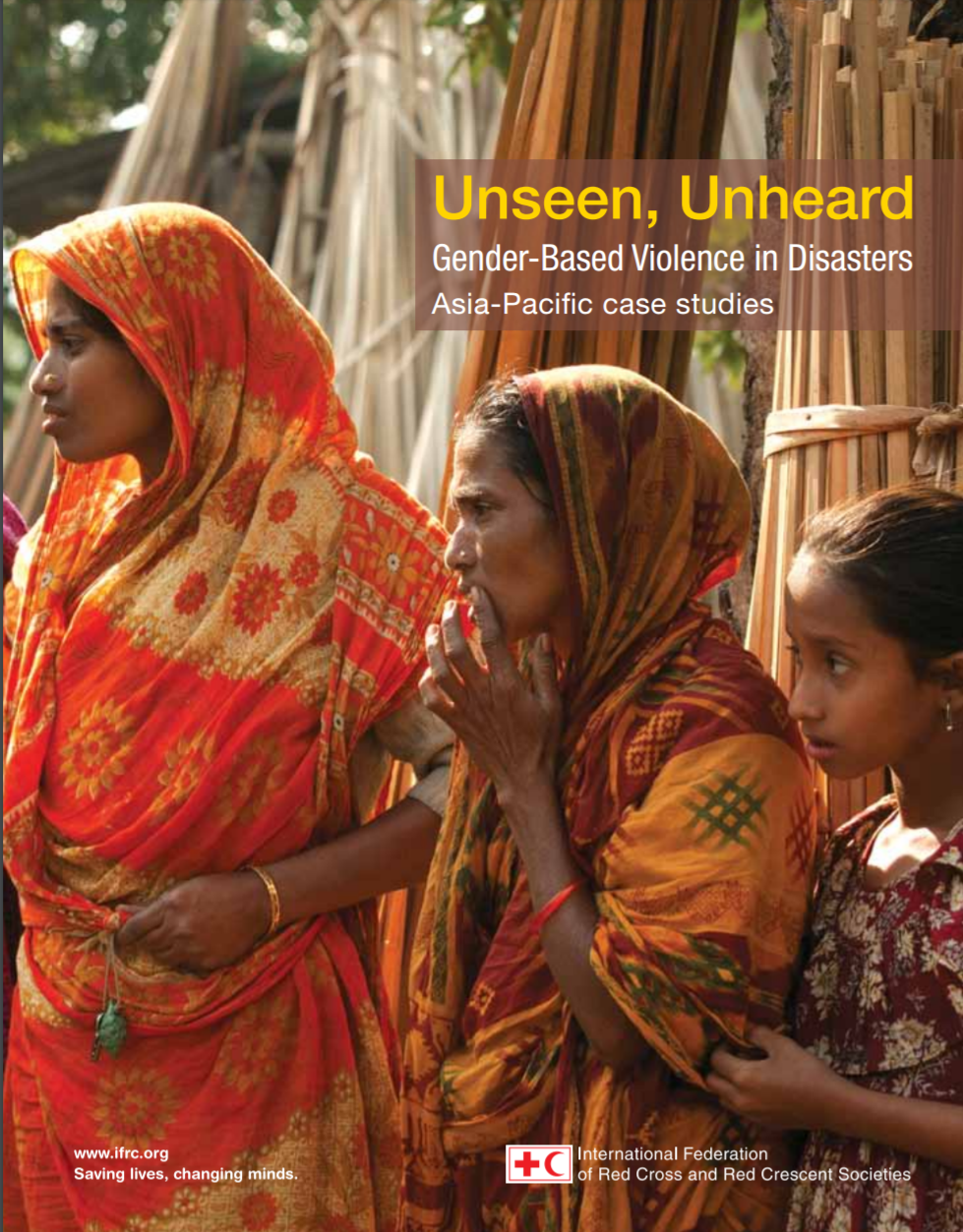
This report features three case studies from the IFRC’s commissioned global study: Unseen, unheard: Gender-based violence in disasters. The first is from Bangladesh, a country with a legacy of cyclical disasters, including cyclones, floods...
Case Study
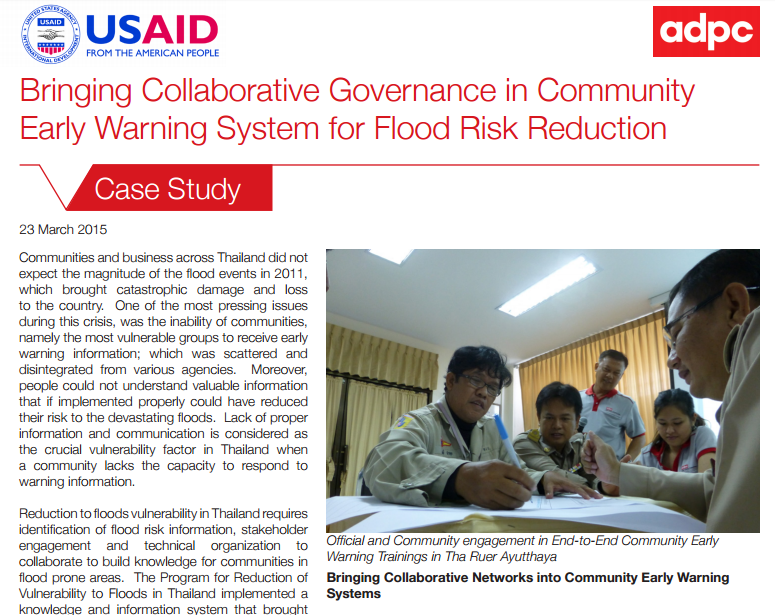
Published 23 March 2015 The collaboration of government, local government, and community is key to flood early warning systems. The Program for Reduction of Vulnerability to Floods in Thailand (ADPC and USAID) implemented various activities under ...
Case Study
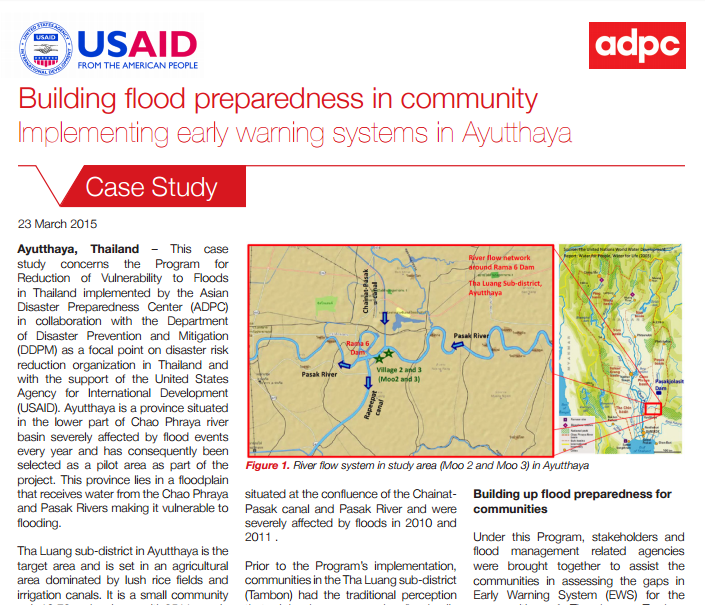
Building flood preparedness in community: Implementing early warning systems in Ayutthaya (Thailand)
Published: 23 March 2015 Ayutthaya, Thailand – This case study concerns the Program for Reduction of Vulnerability to Floods in Thailand implemented by the Asian Disaster Preparedness Center (ADPC) in collaboration with the Department of Disast...
Report
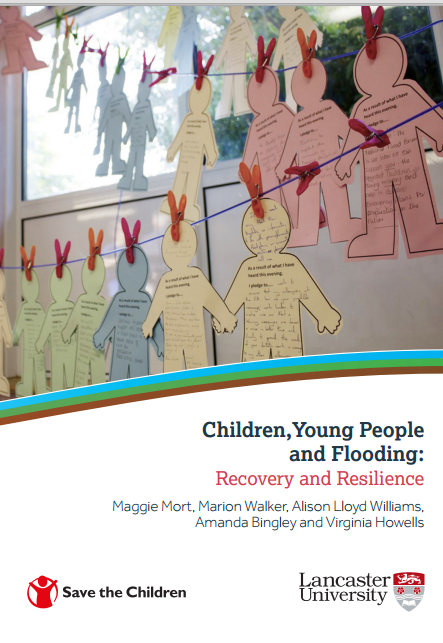
Children, young people and flooding: Recovery and resilience Research with flood-affected children reveals serious impacts on well-being but also a desire to take on a role in flood risk management. Lancaster University researchers found that factors...
Other type of resource
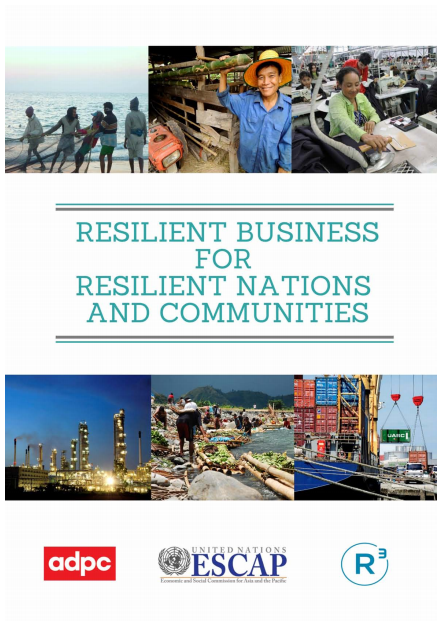
Building resilience to disasters is increasingly being recognized as a priority area in order to protect hard-earned development gains in the Asia-Pacific region. The private sector alone is estimated to hold 70 to 85 per cent of the investment in...
